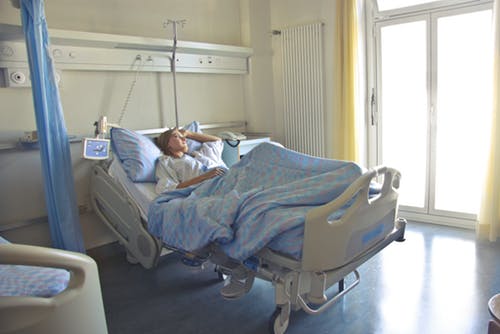When the scientific community found out last month that the novel coronavirus which led to the onslaught of the COVID-19 pandemic can survive for a couple of days to a week on hard surfaces such as stainless steel and glass but will perish n just a matter of a few hours after landing on copper.
This implies to us we still have a shining beacon of hope in our fight against the coronavirus if we’ll start to use copper as the base material for a lot of medical and hospital equipment.
Consider walking through a hospital today and you will realize that an awful lot of the disability equipment they have and use is made either from stainless steel or aluminum.
From bed sticks and rails to handrails, bed frames to equipment racks, and UV poles — everything is usually made either from stainless steel or aluminum, but none would be made from copper. In the hospital jargon, such surfaces where patients and staff alike are likely to have contacted more frequently than others are called touch surfaces.
Hospital tools and equipment that are built using stainless steel are easy to clean and will never corrode. These inherent qualities they come in make them the choice material for use in the manufacturing of these so-called “touch surfaces”. Nevertheless, we can’t say with finality that they are the best material there is for the production of touch surfaces.
What makes copper lethal to microbial life?
Scientists are looking into this with their ongoing research works, and their efforts are paying off, the reason why they’ve come up with several theories.
One of these theories has something to do with the fact that living cells come with a small amount of electrical current. They also found out that there is a voltage difference between the outside and the inside part of the cell, which they refer to as transmembrane potential.
Evidence is suggesting that when bacteria comes in contact with copper, it causes the metal to short circuit. When this happens, it will cause the cell membrane to weaken, creating a hole in the cell.
EPA Testing

In 1983., P. Kuhn made a study which had him measure brass and steel bacterial levels on doorknobs in a hospital. He was simply astounded by the outcome when he found out that brass doorknob exhibited very little to bacterial activity or growth. Contrary to this, the stainless steel door knobs are heavily infested by bacteria.
The results of his study spurred scientifically controlled and in-depth study, making use of the test protocols laid recommended by the US Environmental Protection Agency (EPA) which is aimed at quantifying the copper and copper alloys’ antibacterial properties.
The EPA carefully looked at these studies, reviewed them, and came up with the conclusion that copper alloys that were not coated with anything are capable of exterminating disease-inducing bacteria by at least 99.9%.
The action begins after 2 hours of contact. This suggests that copper and copper-infused materials qualify as the perfect base material to use for surfaces that are likely to be touched most of the time. This is offering us an extra layer of defense against bacterial infections.
To preserve copper’s inherent antimicrobial property, it should not be painted on, varnished, or lacquered. It should not be coated with anything or waxed in any way. Doing so will run the risk of attenuating this important attribute of copper.
Similar to gaseous and liquid disinfectants, it has been found out that antimicrobial copper alloys can lower the risk of microbial contamination but may not necessarily take away the risk of cross-contamination.
If we can incorporate the use of copper as the base material in the manufacturing phase for disability equipment, or infuse the same in the production of their parts or components, we have greater chances of further enhancing our layer of security against harmful microbial life, including the coronavirus.
But we can’t put everything up on copper alone, it won’t be able to do the job all by itself. Hospital tools and equipment that are made from copper need sustained cleaning with respect to regular hygienic practices. Besides, we need to keep in mind that these types of alloys are not intended for drinking water applications or food-contact use.
Fabricators, suppliers, and manufacturers with an EPA registration may take advantage of their Cu+ mark and the Antimicrobial Copper™ to show that their product offerings are created out of EPA-registered antimicrobial alloys.

